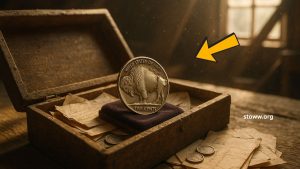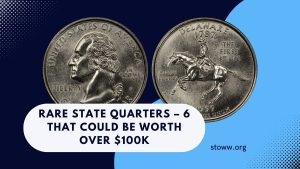The 1995-S Kennedy Half Dollar stands out in numismatic circles, not just for its design but for its potential value.
While many may overlook this coin as common currency, certain factors can elevate its worth to impressive heights. Understanding these nuances can transform a simple half dollar into a prized possession.
Overview of the 1995-S Kennedy Half Dollar
Introduced in 1964 to honor President John F. Kennedy, the Kennedy Half Dollar has been a staple in U.S. coinage. The 1995-S variant, minted in San Francisco, is particularly notable. This year saw two primary versions:
- Clad Proof: Composed of 91.67% copper and 8.33% nickel, with a mintage of 2,117,496 coins.
- Silver Proof: Consisting of 90% silver and 10% copper, with a notably lower mintage of 679,985 coins, making it the lowest mintage silver proof in the series up to that year.
Factors Influencing Value
Several elements contribute to the coin’s value:
- Mintage and Rarity
The limited production of the silver proof version enhances its scarcity and desirability among collectors. - Condition and Grading
Coins are graded on a scale from 1 to 70 by professional services. A perfect grade of PR70 Deep Cameo (DCAM) signifies a flawless coin with exceptional contrast between the raised design and mirrored background. Such coins can command prices upwards of $6,000. - Market Demand
The Kennedy Half Dollar series holds a special place among collectors, and coins with unique attributes or in pristine condition often see increased demand.
Notable Auction Records
High-grade specimens have achieved remarkable prices:
- A 1995-S Silver Proof Kennedy Half Dollar graded PR70 DCAM sold for $2,990 in 2003.
- Another example in similar condition fetched over $1,200 in the same year.
Identifying a Valuable 1995-S Kennedy Half Dollar
To determine if your coin holds significant value:
- Check the Mint Mark
Locate the “S” mint mark on the obverse side, indicating it was minted in San Francisco. - Assess the Composition
Silver proof versions have a distinct appearance and weight due to their 90% silver content. - Examine the Condition
Look for a mirror-like finish and sharp details. Any imperfections can affect the grade and value.
Preservation and Grading
Maintaining the coin’s condition is crucial:
- Proper Storage: Use protective holders to prevent scratches and environmental damage.
- Avoid Cleaning: Cleaning can reduce the coin’s value; it’s best to leave it in its original state.
- Professional Grading: Submitting the coin to reputable grading services can provide an official grade, enhancing its marketability.
| Coin Version | Composition | Mintage | Highest Recorded Auction Price | Notable Features |
|---|---|---|---|---|
| Clad Proof | 91.67% Copper, 8.33% Nickel | 2,117,496 | $2,990 | Common proof version |
| Silver Proof | 90% Silver, 10% Copper | 679,985 | $2,990 | Lowest mintage silver proof to date |
The 1995-S Kennedy Half Dollar exemplifies how specific factors like mintage, composition, and condition can significantly influence a coin’s value.
For collectors and enthusiasts, understanding these aspects is essential in identifying and preserving valuable pieces. Whether you’re a seasoned numismatist or a casual collector, keeping an eye out for such treasures can be both rewarding and profitable.
FAQs
What distinguishes the 1995-S Silver Proof Kennedy Half Dollar from other versions?
The 1995-S Silver Proof is composed of 90% silver and had a mintage of 679,985 coins, making it particularly scarce compared to other proofs.
How can I determine if my 1995-S Kennedy Half Dollar is a silver proof?
Silver proofs typically have a sharper, mirror-like finish and weigh more due to their silver content. The “S” mint mark indicates it was minted in San Francisco.
Why are high-grade coins more valuable?
Coins in pristine condition (high-grade) are rarer and more desirable to collectors, often fetching higher prices at auctions.



